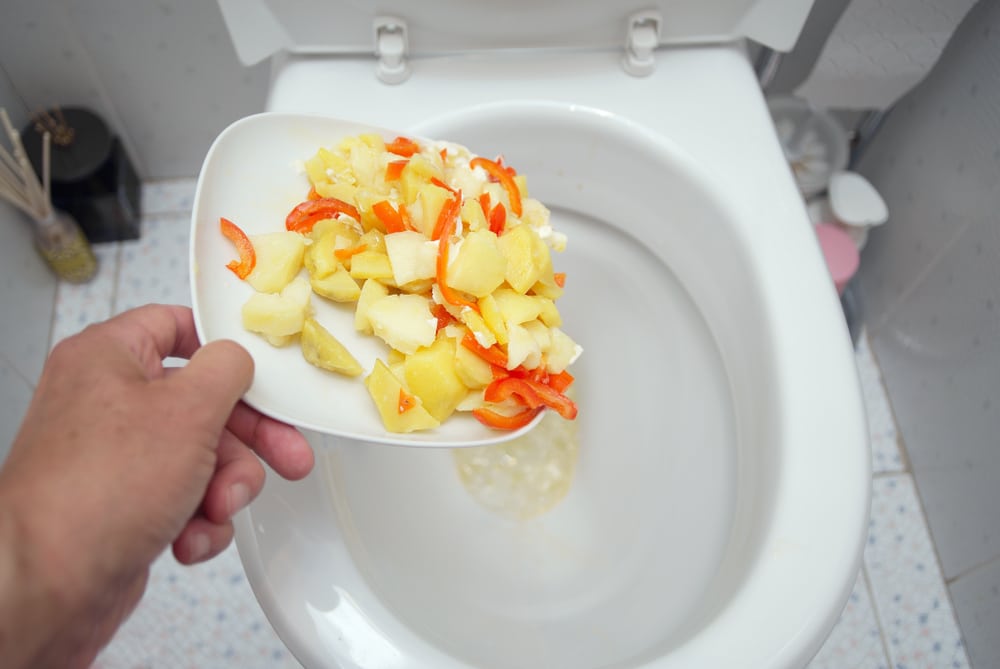Are You Allowed to Dispose of Food in the Toilet?
Are You Allowed to Dispose of Food in the Toilet?
Blog Article
The publisher is making several good observations about Flushing Food Down the Toilet? as a whole in the article on the next paragraphs.

Introduction
Many people are frequently confronted with the dilemma of what to do with food waste, especially when it pertains to leftovers or scraps. One common question that arises is whether it's alright to purge food down the toilet. In this article, we'll look into the reasons individuals may consider flushing food, the effects of doing so, and different methods for appropriate disposal.
Reasons that people may take into consideration purging food
Lack of recognition
Some people may not know the possible damage caused by purging food down the toilet. They may wrongly believe that it's a safe practice.
Comfort
Flushing food down the toilet might seem like a fast and simple option to dealing with unwanted scraps, specifically when there's no close-by trash bin readily available.
Negligence
Sometimes, individuals may just pick to flush food out of sheer idleness, without considering the effects of their actions.
Repercussions of flushing food down the commode
Environmental effect
Food waste that ends up in waterways can add to air pollution and harm aquatic ecological communities. Additionally, the water used to purge food can stress water sources.
Plumbing issues
Flushing food can cause blocked pipes and drains, causing costly pipes fixings and aggravations.
Sorts of food that need to not be flushed
Coarse foods
Foods with fibrous appearances such as celery or corn husks can get tangled in pipelines and trigger obstructions.
Starchy foods
Starchy foods like pasta and rice can take in water and swell, causing blockages in pipes.
Oils and fats
Greasy foods like bacon or food preparation oils should never be flushed down the bathroom as they can strengthen and cause obstructions.
Appropriate disposal methods for food waste
Using a garbage disposal
For homes outfitted with garbage disposals, food scraps can be ground up and flushed via the pipes system. However, not all foods are suitable for disposal in this fashion.
Recycling
Particular food product packaging products can be recycled, decreasing waste and decreasing ecological effect.
Composting
Composting is a green means to get rid of food waste. Organic products can be composted and utilized to enrich dirt for gardening.
The relevance of correct waste administration
Reducing environmental harm
Correct waste management techniques, such as composting and recycling, assistance decrease pollution and maintain natural deposits for future generations.
Securing plumbing systems
By staying clear of the technique of flushing food down the toilet, house owners can prevent costly pipes repairs and maintain the integrity of their pipes systems.
Verdict
In conclusion, while it might be appealing to flush food down the toilet for convenience, it is very important to comprehend the prospective consequences of this activity. By adopting correct waste monitoring practices and getting rid of food waste properly, people can add to healthier plumbing systems and a cleaner setting for all.
FLUSH FOOD DOWN THE TOILET?
FLUSHING FOOD CAN CAUSE BLOCKED DRAINS IN YOUR HOME
All of the plumbing fixtures in your home are connected to the same sewer pipe outside of your home. This outdoor sewer pipe is responsible for transporting all the wastewater from your home to the Council sewer mains. Even small pieces of food that go down the kitchen sink can cause problems for your sewer. It should therefore be obvious that flushing larger bits of food, such as meat, risks a clog in either the toilet itself or the sewer pipes. Flushing greasy food is even more problematic because oil coagulates when it cools, coating the interior lining of your pipes.
THE TOILET IS NOT A BIN
Food isn’t the only thing that people shouldn’t be flushing down the toilet. People use the toilet to dispose of all kinds of things such as tampons, makeup wipes, dental floss, kitty litter and even underwear. Water goes to great lengths to educate residents about the high costs and stress placed on wastewater treatment systems simply from people flushing the wrong stuff down the toilet. It costs taxpayers millions of dollars each year, and homeowners thousands in blocked drain repairs.
FLUSHING FOOD IS A WASTE OF WATER
Flushing food is a waste of our most precious resource - water. In June this year Level 1 water restrictions were introduced to protect water supply from drought conditions. Much of New South Wales continues to be affected by prolonged drought with recent figures revealing up to 97 per cent of the state remains in drought. Depending on whether you have a single or dual flush toilet, every single flush uses between five and 11 litres of water. In the current climate this is a huge amount of water to be wasting on flushing food that should be placed in the bin (or better yet, the compost).
https://www.jabplumbingsolutions.com.au/blog/can-you-flush-food-down-the-toilet

We are very focused on Flushing Food Down the Toilet? and I'm hoping you enjoyed reading my entry. Kindly take a moment to share this blog if you liked it. I thank you for reading our article about Flushing Food Down the Toilet?.
Click Here Report this page